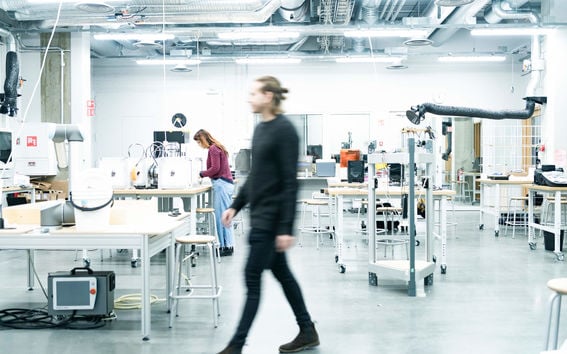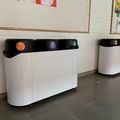Waste management – School of Arts, Design and Architecture

Waste management at the School of Arts, Design and Architecture
Waste management at ARTS, as well as environmental management in general, is coordinated by ACRE along with the persons responsible at each department and degree programme. ARTS’s workshop and studio masters also provide help with the implementation of environmental management in practice.
The main objective of waste management is to ensure that as small a share of waste as possible is utilised and therefore ends up at a landfill and that a large a share of waste as possible is utilised as effectively as possible.
Look for a waste sorting guide and waste plans.
Implementation of waste management and contract partners
Lassila & Tikanoja OYJ is Aalto’s contract supplier for cleaning services and the emptying of waste bins (see Cleaning services and notifications). Tanja Pietikäinen from ACRE acts as the contact person for waste management.
Every person who studies or works at ARTS is tasked with ensuring that no waste that does not belong in waste bins is put in them – sorting is the responsibility of all the property’s users, not only the person emptying the bins or the cleaner.
Reports
Annual sustainability reports show the plans and procedures for environmental management that have been introduced over the years as well as the annual statistics for waste management.
Sorting of waste at ARTS
Areas of responsibility in sorting:
- Students and staff are responsible for ensuring that the waste created during their work is sorted correctly in the recycling and waste bins provided by the school.
- Each department’s staff is also responsible for emptying the small cardboard (or other type of) paper collection boxes in classrooms and offices into larger plastic bins for paper. which are located near most copiers or at centralised waste points.
- The school’s cleaning service sees to it that small office waste baskets are emptied into energy waste bins. Orange bags are put in energy waste. Some waste baskets also use black bags which go to landfill waste bins.
- ACRE coordinates waste management and are responsible for the emptying of large waste bins in the basement into larger waste containers from where waste is collected.
Always put waste in its own sorting points, never in sorting points for other types of waste. Remember to read the sorting instructions. In cases where it is unclear how waste should be sorted please contact the workshop supervisors.
Avoiding the creation of waste, and utilisation of waste
The most effective form of waste management is to prevent waste from being created. Where possible, the creation of waste should be taken into account already when planning the procurement of equipment, furniture, materials and chemicals. An effort is made to cut down on the overall amount of waste by using materials effectively(i.e. producing as few excess and waste materials as possible) and by providing guidance to staff and student on the use of work methods and equipment that will create as little waste as possible.
If and when materials become unneeded, the following utilisation principle should be complied with where possible:
- As a rule, an effort is made to recycle materials, equipment, and furniture that are no longer needed in their original form (internal recycling at ARTS, the Helsinki area’s recycling centre etc. /update, repair/service/reuse...).
- When this is not possible the alternative is to recycle materials as raw materials for industry (paper, glass, metal, biological waste...).
- The third option, which is the least effective utilisation method, is to burn waste to create energy (energy waste and private households).
The borrowing and recycling of inhouse equipment, furniture and materials is encouraged and an effort is made to increase these where possible.Furniture and equipment that are no longer used by the school must when necessary be delivered in their original form to a recycling point such as Kierrätyskeskus (the Helsinki metropolitan area’s recycling centre, which also has a pick-up service) or other parties who will utilise these. Kierrätyskeskus will also pick up materials suited for arts and crafts (wood, textiles, etc.) for use by schools and day-care centres.
Recycling and sorting
Efficient recycling and sorting of waste is part of Aalto University's sustainable development strategy. We strive to reduce waste and reuse raw materials for either new products or energy.

School of Arts, Design and Architecture
- Published:
- Updated: